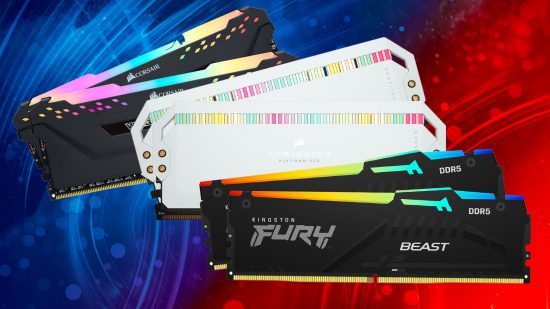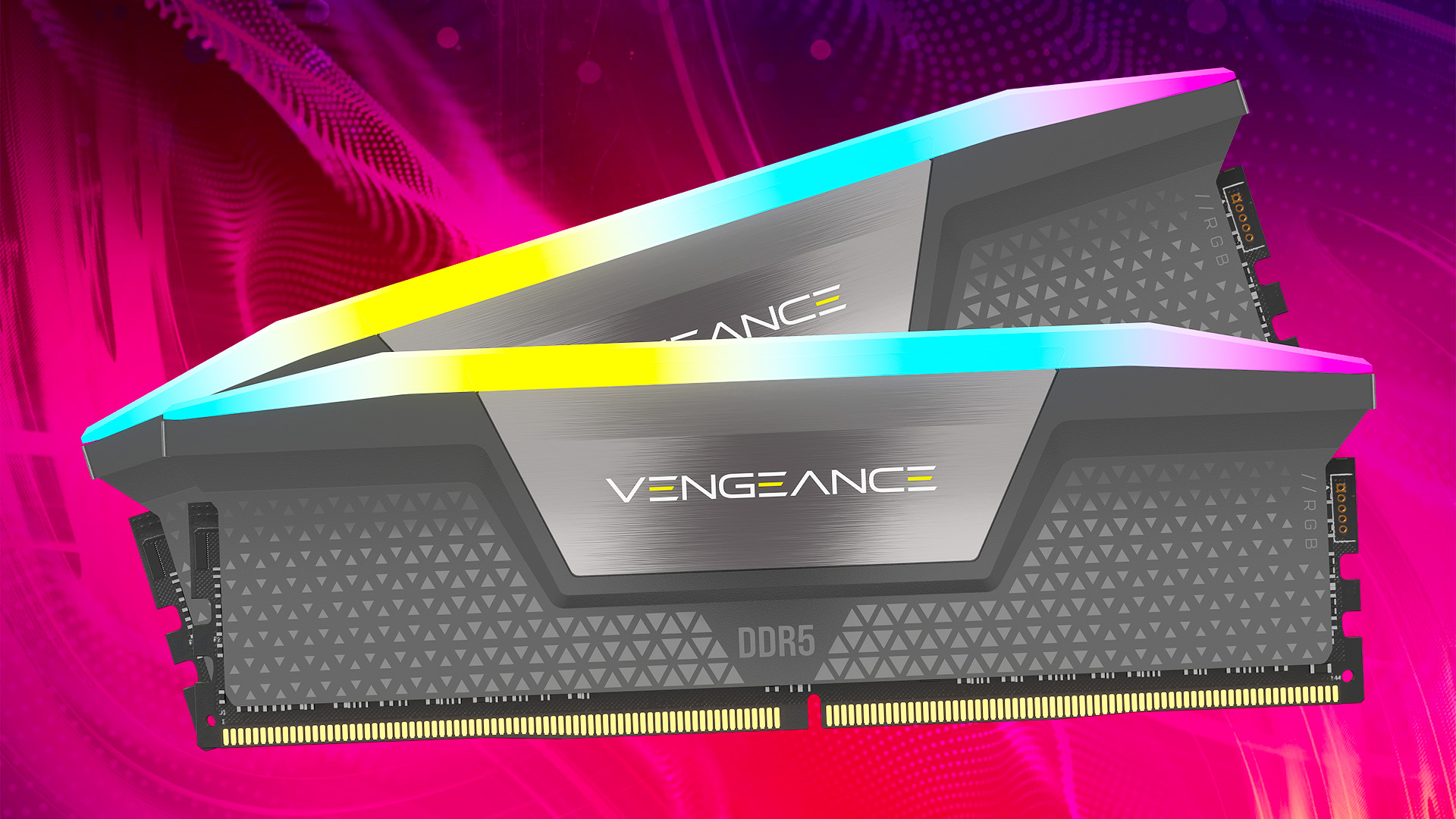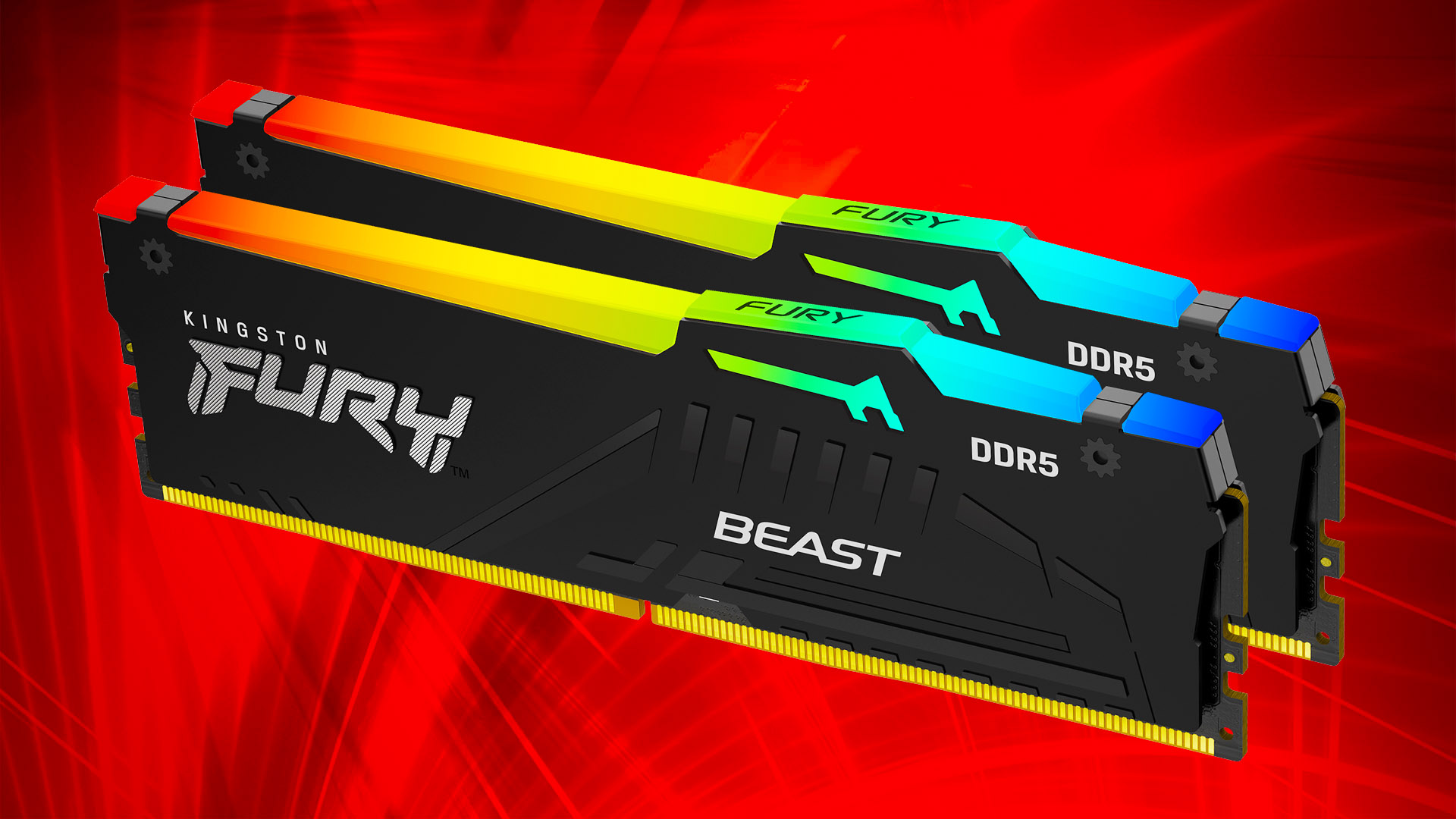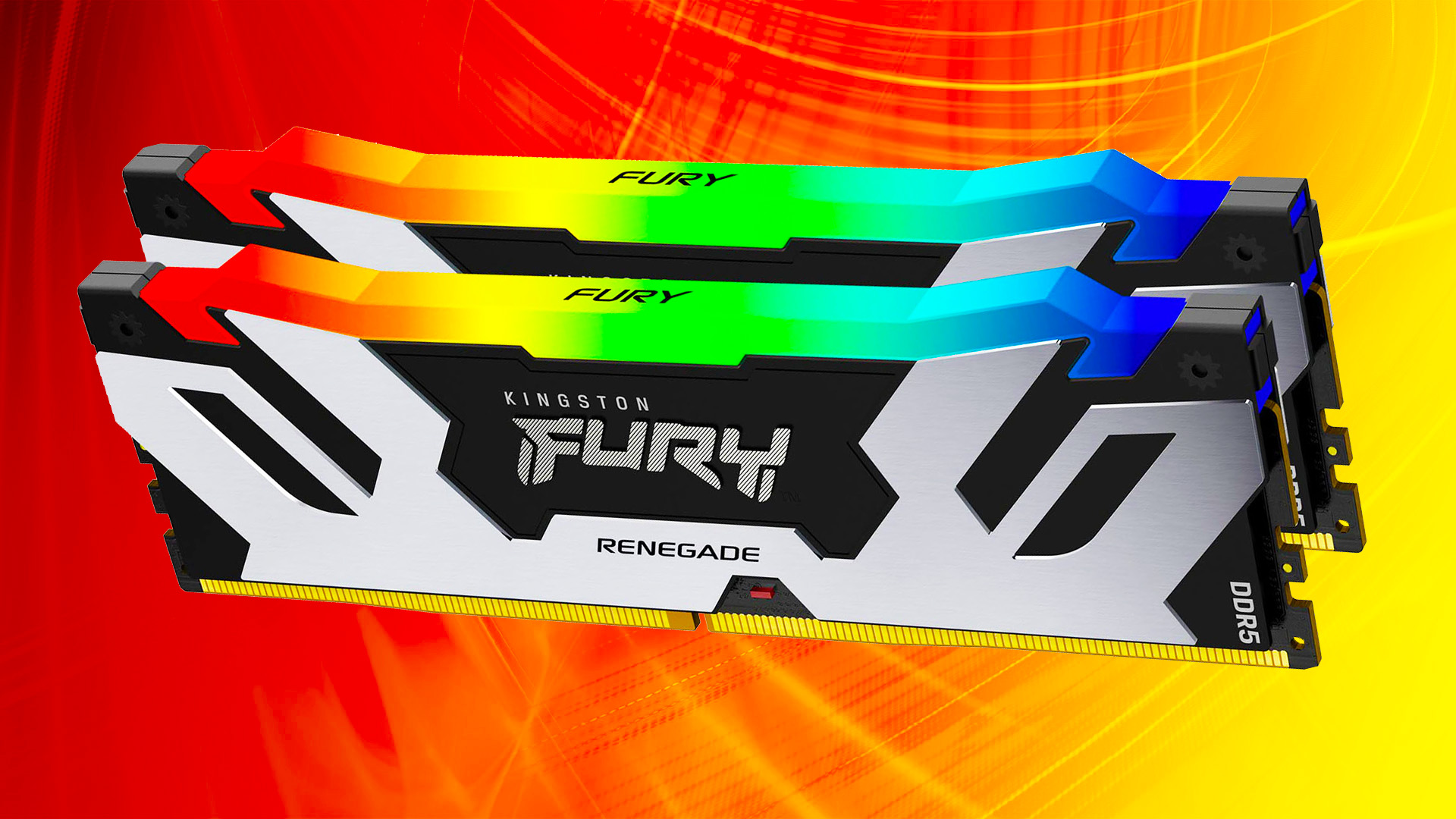Are you looking for the best RAM for a gaming PC? Whether you’re building a brand new rig, or just looking for the best RAM upgrade for an existing system, our memory buying guide takes you through both the best DDR4 memory and the best DDR5 memory, at every budget. If you don’t care for flashing rainbow lights, you’ll find the best quality no-frills memory, and if you like to have it all, we also cover the best RGB RAM, for those who want to display their PC’s innards with pride.
Here is the best RAM for gaming in 2024:
- Corsair Vengeance LPX – the best budget DDR4 RAM
- Kingston Fury Renegade DDR4 RGB – the best low-profile RGB DDR4 RAM
- Corsair Vengeance RGB Pro – the best DDR4 RGB RAM
- Corsair Dominator Platinum RGB DDR4 – the best premium DDR4 RGB RAM
- G.Skill Trident Z5 Neo EXPO – the best budget AMD DDR5 RAM
- Corsair Vengeance RGB DDR5 EXPO – the best AMD DDR5 RGB RAM
- Kingston Fury Beast DDR5 RGB – the best Intel DDR5 RGB RAM
- Kingston Fury Renegade DDR5 RGB – the best premium DDR5 RGB RAM
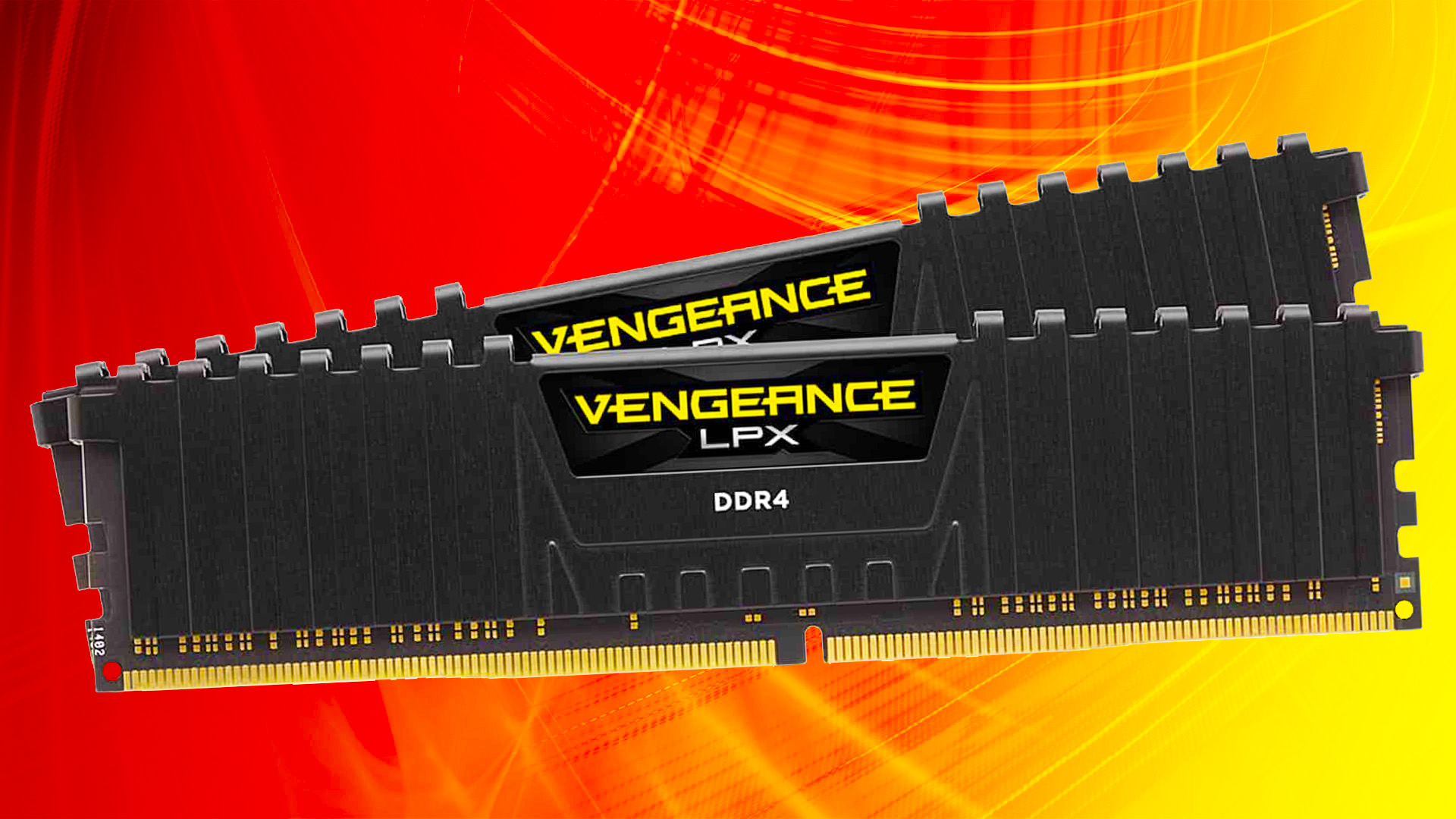
1. Corsair Vengeance LPX
The best budget DDR4 RAM is the Corsair Vengeance LPX.
Corsair Vengeance LPX specs:
| Effective frequency | 3600MHz |
| Timings | 18-22-22-42 |
| Voltage | 1.35V |
| Height (from base) | 33.5mm |
| RGB software compatibility | N/A |
| Intel XMP and AMD EXPO options | XMP 2 |
Pros
- Great price
- Low profile
- Decent performance
Cons
- Bland-looking heatsinks
- No lighting
- Sometimes limited overclocking headroom
The amazingly priced Corsair Vengeance LPX DDR4 memory modules are not only the best entry-level DIMMs available, but they also have a very low profile. We’ve used them in loads of budget PC build guides over the last few years. With a height of just 33.5mm, you’ll also have no trouble squeezing one of these kits into your motherboard if you have a radiator installed in the roof of your case, and they’re ideal for mini-ITX systems where space is at a premium.
They don’t look particularly exciting, and they often don’t overclock far beyond their rated speeds, but their anodized aluminum heatspreaders keep the memory cool enough while giving these DIMMs a minimally smart appearance. The current sweet spot price for these modules is a 3600MHz kit with CL18 latency timings, which we’ve detailed below.
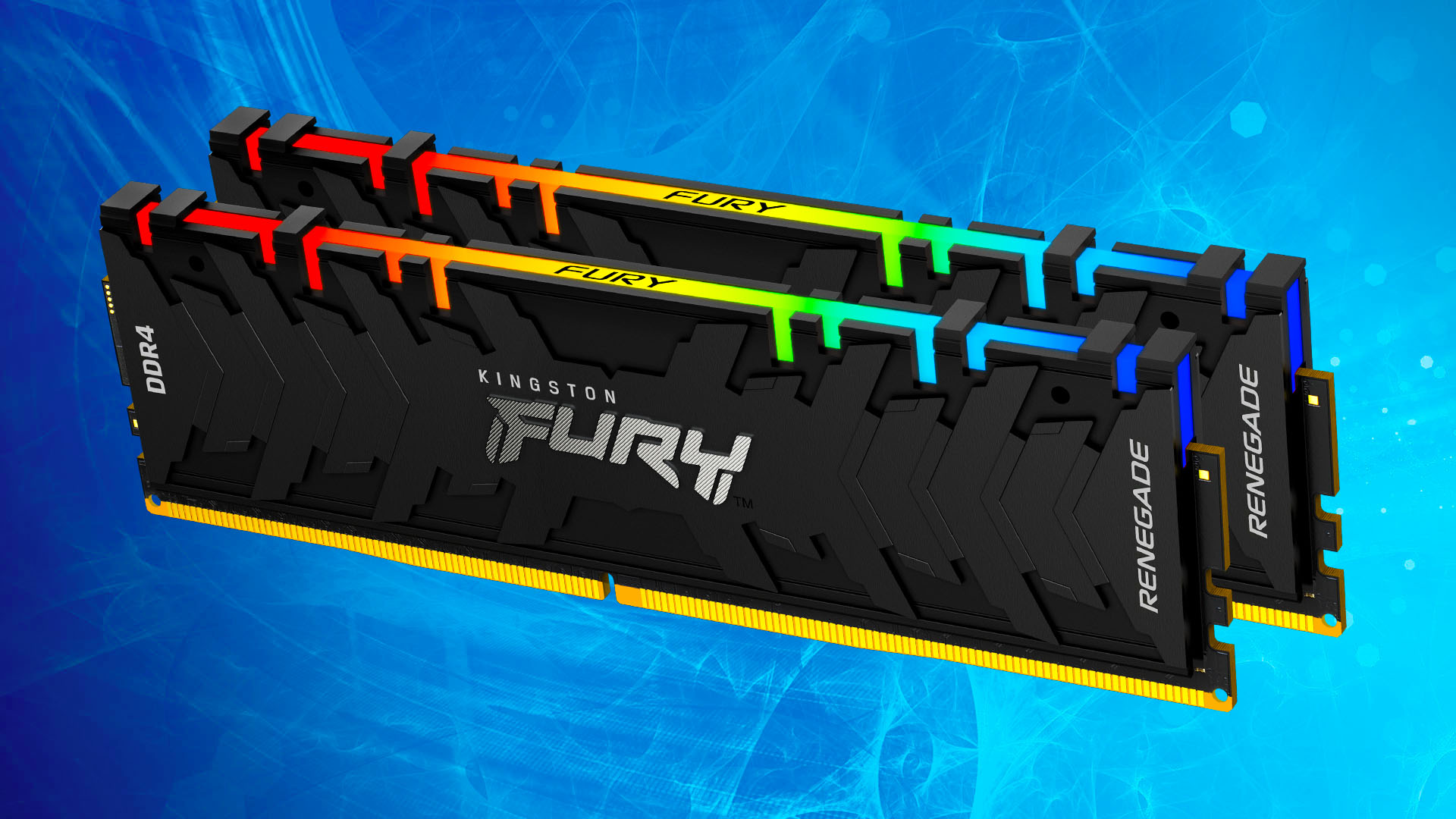
2. Kingston Fury Renegade DDR4 RGB
The best low-profile RGB DDR4 RAM is the Kingston Fury Renegade DDR4 RGB.
Kingston Fury Renegade DDR4 RGB specs:
| Effective frequency | 3600MHz |
| Timings | 16-20-20 |
| Voltage | 1.35V |
| Height (from base) | 42mm |
| RGB software compatibility | Kingston Fury CTRL, Asus Aura Sync, Gigabyte RGB Fusion 2.0, MSI Mystic Light Sync, ASRock Polychrome Sync |
| Intel XMP and AMD EXPO options | 2 x XMP 2 |
Pros
- Low profile
- Good lighting software
- Tight timings
Cons
- Taller than Corsair LPX modules
- Cheaper kits are faster
If you’re looking for some bright RGB gaming memory that isn’t going to clash with an AIO liquid CPU cooler in the roof of your case, then the Kingston Fury Renegade DDR4 RGB is a fantastic option. The lighting looks intense, there are loads of options for RGB software control and the diffusion bars iron out the gaps between the LEDs well.
The side details are an attractive touch and, as a bonus, the modules are only 42mm tall, making them ideal for use with height-restricted coolers or in very compact systems. In our original review, we criticized our sample’s high price for its loose latency timings and needlessly high 4600MHz frequency, but you can now hit the 3600MHz CL16 sweet spot with these kits for a reasonable price, which we’ve detailed below.
What’s more, these kits come with two XMP profiles, enabling you to easily experiment with a 3000MHz frequency at 15-17-17 latency timings, as well as the flagship 3600MHz 16-20-20 settings.
Read our full Kingston Fury Renegade DDR4 RGB review.
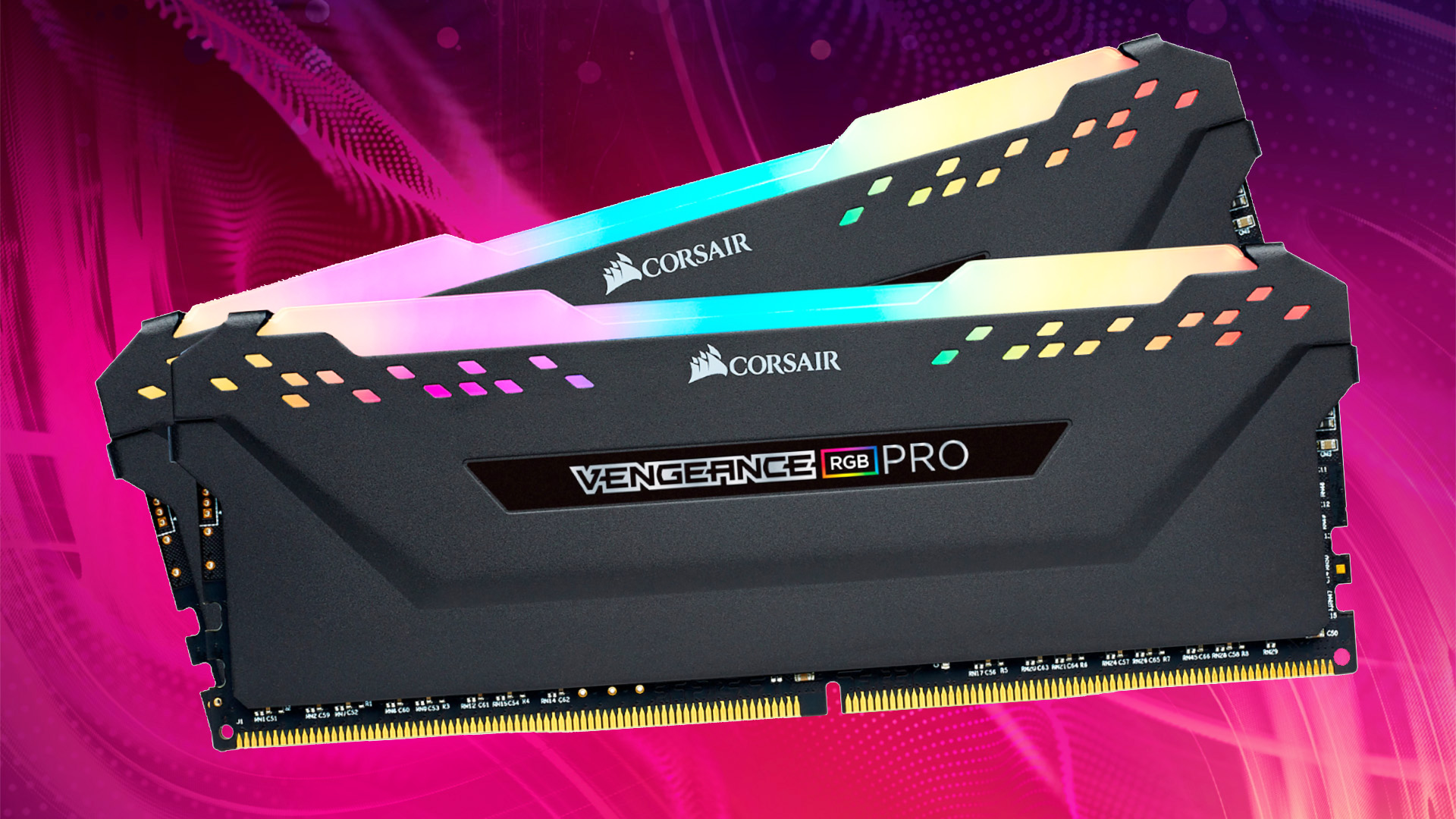
3. Corsair Vengeance RGB Pro
The best DDR4 RGB RAM is the Corsair Vengeance RGB Pro.
Corsair Vengeance RGB Pro specs:
| Effective frequency | 3600MHz |
| Timings | 18-22-22-42 |
| Voltage | 1.35V |
| Height (from base) | 51mm |
| RGB software compatibility | Corsair iCUE |
| Intel XMP and AMD EXPO options | XMP 2 |
Pros
- Fantastic lighting
- Great software
- Reasonable overclocking headroom
Cons
- Might interfere with low-rising CPU heatsinks
- Aging design
We’ve used Corsair Vengeance RGB Pro modules in features and systems more times than we’ve had hot dinners and for good reasons. These RGB gaming memory modules are always very well priced, look fantastic, and have other benefits too.
The lighting is the Vengeance RGB Pro’s party piece, as it’s as vibrant and accurate as any other modules we’ve recently tested but also benefits from full Corsair iCUE software. The diffusing bars across the tops of the modules do a great job of evening out the photons from the LEDs underneath, and you can also buy dummy modules to easily fill out all four DIMM slots on an average ATX motherboard.
There’s some decent overclocking headroom available as well, and we were easily able to push our 3600MHz test sample up to 3866MHz by just upping the frequency, with no need to touch the voltage or latency timings. Be warned, though that the modules are quite tall, with a height of 51mm.
Read our full Corsair Vengeance RGB Pro review.
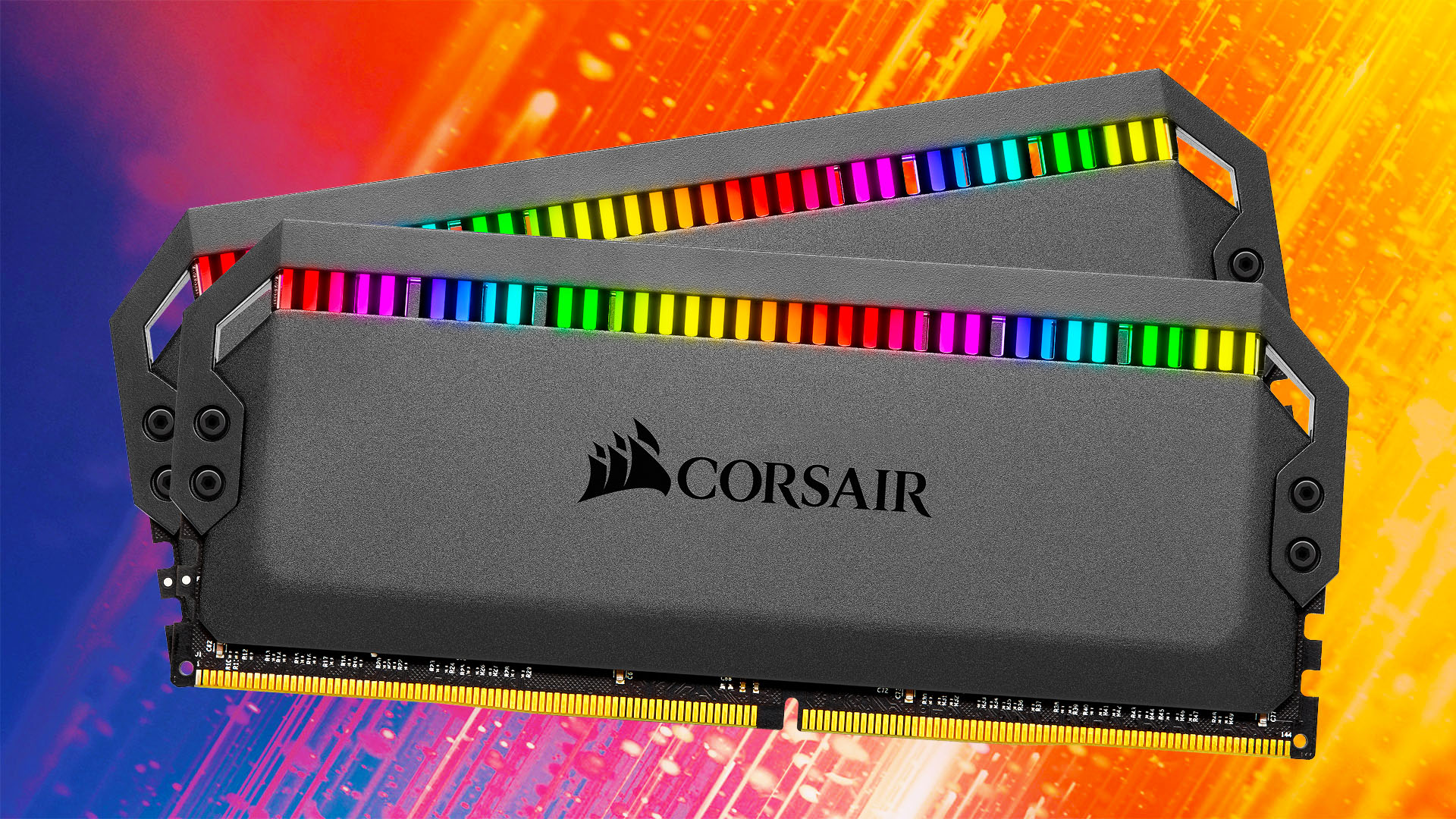
4. Corsair Dominator Platinum RGB DDR4
The best premium DDR4 RGB RAM is the Corsair Dominator Platinum.
Corsair Platinum Dominator RGB DDR4 specs:
| Effective frequency | 3600MHz |
| Timings | 18-19-19-39 |
| Voltage | 1.35V |
| Height (from base) | 55mm |
| RGB software compatibility | Corsair iCUE |
| Intel XMP and AMD EXPO options | XMP 2 |
Pros
- Excellent lighting
- Great software
- Decent overclocking headroom
Cons
- Expensive
- No dummy Light Enhancement modules
- Tall modules
This is as good as DDR4 memory gets. The Corsair Dominator Platinum RGB models are now fairly old, but they remain available in a huge range of speeds and timings, as well as gorgeous white models too. We recommend a 3600MHz kit as the sweet spot, but we had no trouble overclocking are test sample all the way to 3933MHz with no latency or voltage tweaking required.
Corsair’s iCUE software also gives you full control over the LEDs, and with the Dominator Platinum individually lit sections, you can set each LED to a different color with this pixel-like display, rather than having a diffusing light bar. The lighting is very vivid, with accurate colors, and the ability to set each LED segment to a different color is a real boon.
This memory also offered some of the fastest speeds we’ve seen from DDR4 memory in AIDA64 Extreme memory benchmarks, performing well in terms of both read, write and latency out of the box. The only downer is that the modules are very tall, so you’ll need to make sure you have room for them in your case.
Read our full Corsair Dominator Platinum RGB DDR4 review.
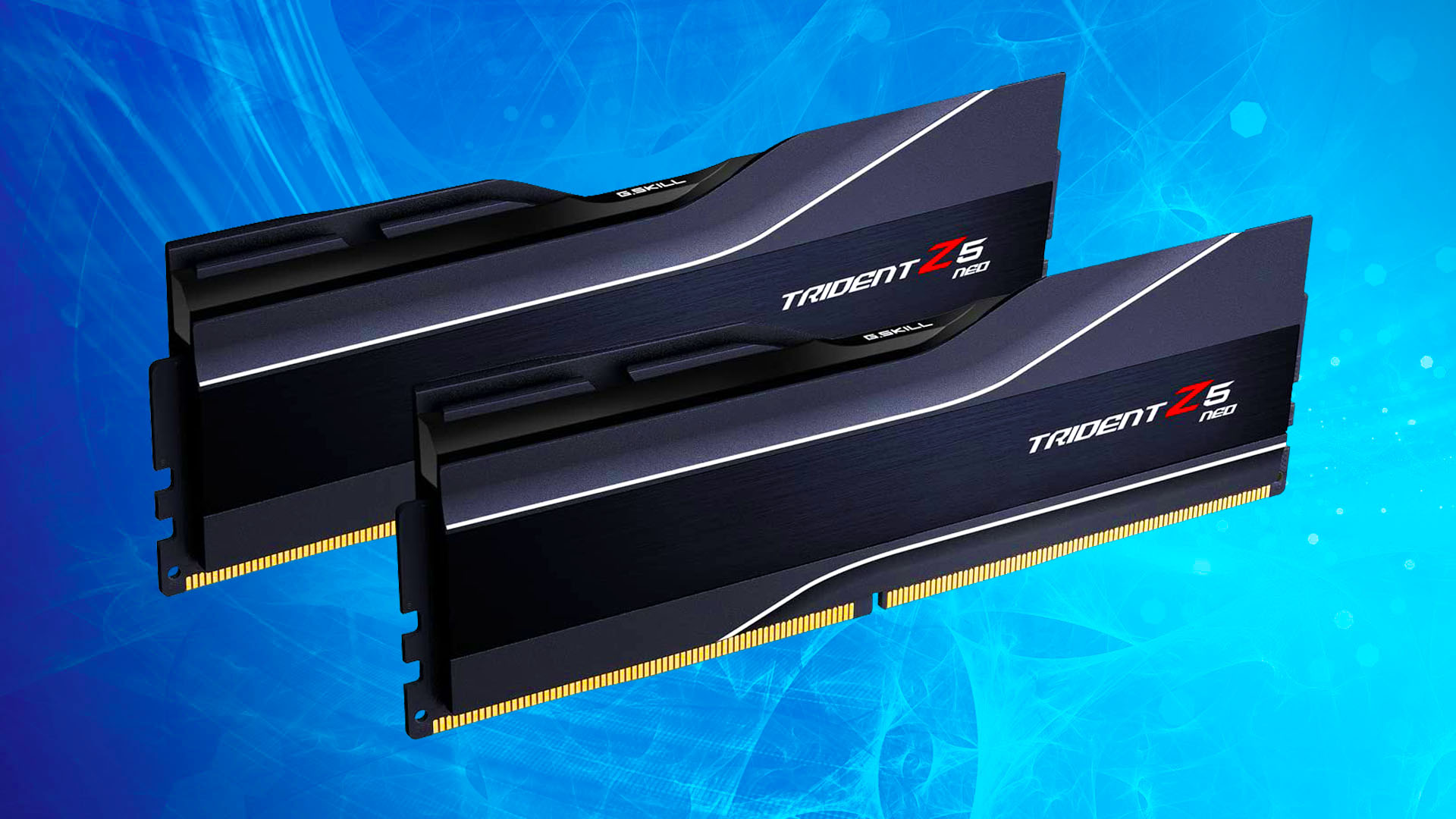
5. G.Skill Trident Z5 Neo EXPO
The best budget AMD DDR5 RAM is the G.Skill Trident Z5 Neo EXPO.
G.Skill Trident Z5 Neo EXPO specs:
| Effective frequency | 6000MHz |
| Timings | 30-38-38-96 |
| Voltage | 1.35V |
| Height (from base) | 43mm |
| RGB software compatibility | N/A |
| Intel XMP and AMD EXPO options | EXPO |
Pros
- Smart-looking heatsinks
- Much cheaper price than at launch
- Fantastic performance on AMD Zen 4 systems
Cons
- No RGB lighting
- Hard to find kits above 6000MHz
- More expensive than non-EXPO memory
If you don’t care about RGB lighting, and you’re simply looking for some high-speed DDR5 memory modules to get the most out of an AMD Ryzen 7000-series Zen 4 system, then the G.Skill Trident Z5 Neo EXPO gives you exactly what you want. This was the first memory we tested with the new AMD EXPO profile system, and we were really impressed by the performance in our benchmarks.
At the time of launch, the 6400MHz kit we reviewed was expensive, but you can now pick up a 6000MHz CL30 set of these modules for a reasonable price, and our tests showed that this frequency is the sweet spot. What’s more, we also found that a 6000MHz EXPO kit of this memory was quicker than a 6400MHz kit of non-EXPO memory in some of our tests.
Read our original G.Skill Trident Z5 Neo EXPO test writeup.
6. Corsair Vengeance RGB DDR5 EXPO
The best AMD DDR5 RGB RAM is the Corsair Vengeance RGB DDR5 EXPO.
Corsair Vengeance RGB DDR5 EXPO specs:
| Effective frequency | 6000MHz |
| Timings | 30-36-36-76 |
| Voltage | 1.4V |
| Height (from base) | 45mm |
| RGB software compatibility | Corsair iCUE |
| Intel XMP and AMD EXPO options | 2 x EXPO |
Pros
- Two EXPO profiles
- Clean and smart design
- Relatively low profile
Cons
- No XMP 3 compatibility
- RGB lighting could be brighter
Corsair’s Vengeance RGB DDR5 memory kits sit between the bland grey modules of its standard Vengeance kits and the super-fancy modules on its Dominator modules. They’re fast and (thanks to a large price drop since our original review) well-priced too, and Corsair is also now producing AMD EXPO models for the latest AMD Zen 4 systems.
The sweet spot is a 6000MHz frequency with tight 30-36-36-76 timings, and the modules are considerably shorter than DDR4 Vengeance RGB Pro DIMMs too, measuring just 45mm tall. For lighting, you get ten individually controlled RGB LEDs sitting underneath a diffusing light bar. The colors are more vivid than those on the original Vengeance RGB Pro DDR4 modules, but they’re not as bright.
As an added bonus, you get two EXPO profiles on a 6000MHz kit, with a 6200MHz option in addition to the standard 6000MHz profile.
Read our full review of the Corsair Vengeance RGB DDR5 EXPO.
7. Kingston Fury Beast DDR5 RGB
The best Intel DDR5 RGB RAM is the Kingston Fury Beast DDR5 RGB.
Kingston Fury Beast DDR5 RGB specs:
| Effective frequency | 6000MHz |
| Timings | 40-40-40-80 |
| Voltage | 1.35V |
| Height (from base) | 42mm |
| RGB software compatibility | Kingston Fury CTRL, Asus Aura Sync, Gigabyte RGB Fusion 2.0, MSI Mystic Light Sync, ASRock Polychrome Sync |
| Intel XMP and AMD EXPO options | XMP 3 |
Pros
- Fantastic lighting
- Universal motherboard software compatibility
- Reasonable price
Cons
- Heatsinks lack flair
- Loose memory timings
Not only do these RGB gaming memory modules look fantastic, but the Kingston Fury Beast DDR5 RGB DIMMs also have a low profile, measuring just 42mm in our Vernier calipers at the tallest point. In what’s quite a rare move, Kingston is also offering them in a 16GB (2 x 8GB) kit, giving you a cheaper way to jump on the DDR5 bandwagon than buying a 32GB kit.
The RGB lighting is quite understated, with a diffusing section of plastic on top of the modules that offers vibrant colors and an even lighting array. You can use the software included with your ASRock, Asus, Gigabyte, or MSI motherboard to control your RGB lighting, or Kingston’s excellent Fury CTRL software.
When it came to overclocking, we were able to add another 200MHz to the Fury Beast DDR5 RGB’s clock speed, easily giving us a 6200MHz kit for the price of a 6000MHz kit. Our only criticism is that the latency timings could be tighter, but that doesn’t make as big a difference to performance as frequency.
Read our full review of the Kingston Fury Beast DDR5 RGB.
8. Kingston Fury Renegade DDR5 RGB
The best premium DDR5 RGB RAM is the Kingston Fury Renegade DDR5 RGB.
Kingston Fury Renegade DDR5 RGB specs:
| Effective frequency | 6400MHz |
| Timings | 32-39-39-80 |
| Voltage | 1.35V |
| Height (from base) | 42mm |
| RGB software compatibility | Kingston Fury CTRL, Asus Aura Sync, Gigabyte RGB Fusion 2.0, MSI Mystic Light Sync, ASRock Polychrome Sync |
| Intel XMP and AMD EXPO options | XMP 3 |
Pros
- Fantastic lighting
- Universal motherboard software compatibility
- Fast performance, thanks to high frequency and tight timings
Cons
- Can’t overclock any further
- Expensive
- Limited other benefits over cheaper kits
This speedy Kingston Fury Renegade DDR5 RGB kit sits at the top of the company’s range and has the looks, frequency, timings and price to match. The 6400MHz kit we tested uses seriously fast SK Hynix memory chips and has very tight latency timings of 32-39-39-80. In our AIDA64 Extreme read and write tests, this kit topped our graphs, with a 94GB/s read speed, 87GB/s write speed and 63.5nm latency.
The heatsink design is very attractive, with one black layer sitting on the memory chips and a silver shroud sitting on top of this layer. The heatsinks did a decent job of cooling the memory as well, and the RGB lighting is particularly bright and vivid.
While you can use ASRock, Asus, Gigabyte, or MSI’s software to control the lighting, there’s also Kingston’s Fury CTRL software, which offers detailed control over colors and effects for each LED on each module.
Read our full review of the Kingston Fury Renegade DDR5 RGB.
How we test RAM
At Custom PC, we’ve been reviewing PC hardware since 2003, and we’ve tested and overclocked hundreds of RAM kits, going right back to the original DDR era. We run both synthetic and application benchmarks to assess performance, and we also see how far we can overclock each kit.
In addition, we look at any RGB lighting features and assess how good the RAM modules look, as well as how well any control software works. We also assess the height of memory modules for practical purposes, such as CPU cooler clearance. For more information, check out our How we test page.
Gaming RAM FAQ
What do RAM numbers mean?
The long series of numbers used to identify memory specs is almightily confusing, particularly when you’re browsing an etailer store online. Instead of just DDR4 3200MHz, you’ll often see a sequence of letters and numbers such as PC4-25600C16, possibly followed by a string of hyphenated numbers, such as 16-20-20-49. What does this all mean?
The first part is just the type of memory. So, PC4 is DDR4, PC5 is DDR5, and so on. The second long number is the speed in MB/s, which in the case of DDR4 and DDR5 is calculated either by taking the effective clock speed and multiplying it by eight, So, for a 3200MHz (effective) memory module, its MB/sec rating is 8 x 3,200, which equals 25,600MB/sec, ending up with a PC4-25600 label.
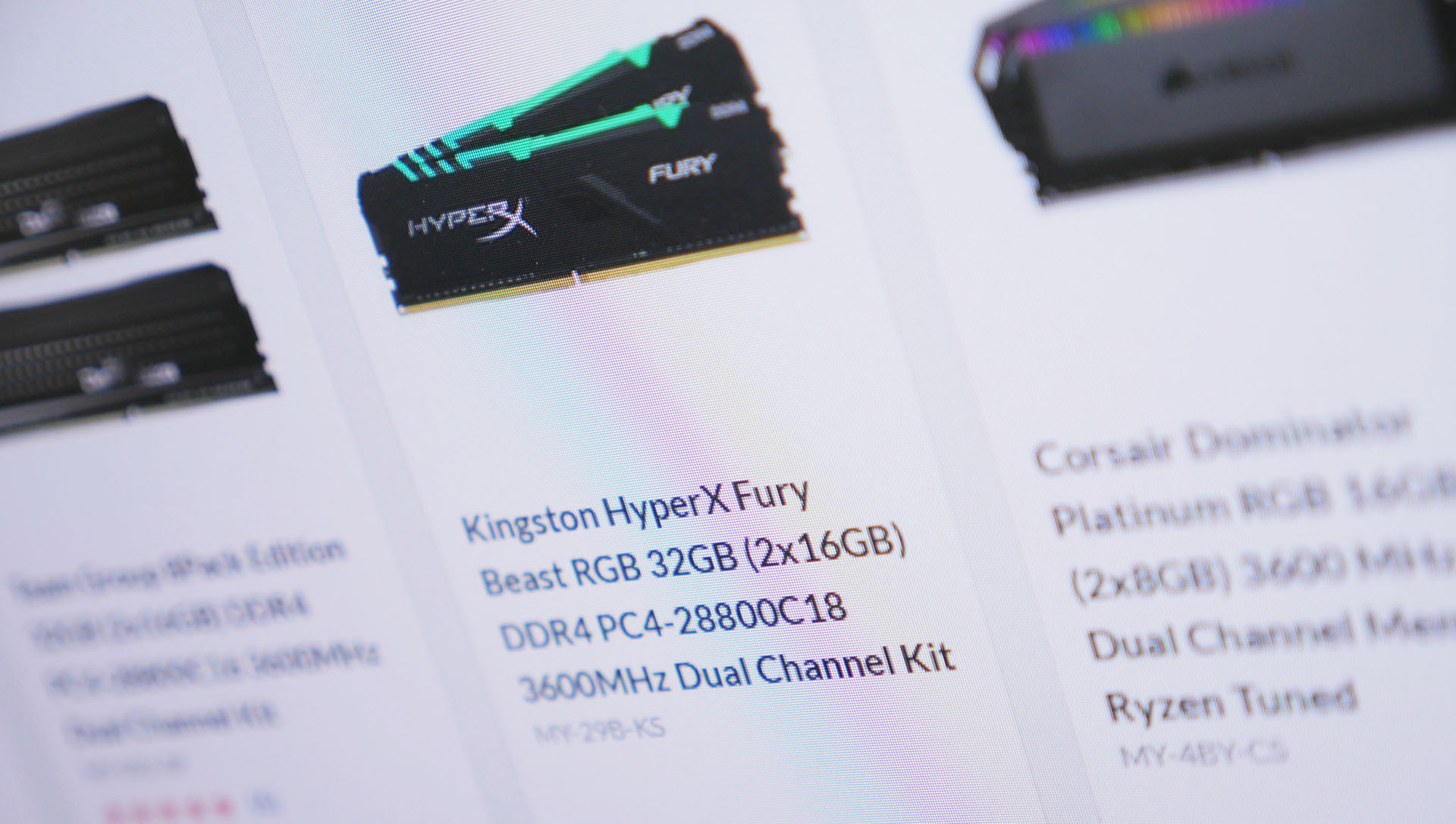
The final piece of the puzzle is the C16 number (or equivalent) on the end, which refers to the column address strobe (CAS) latency (CL) of the memory. This is one of the commonly provided measures of the latency in clock cycles that it takes for a memory module to respond to a command. CL is also the first of the four hyphenated numbers you’ll see on memory listings, with the other three being row address strobe (RAS) to CAS delay (tRCD), row precharge time (tRP), and row active time (rRAS).
These terms all refer back to the grid structure used to construct the RAM. Because the memory cells are accessed first by a row being activated, then the columns from that row being accessed, there are inherent delays associated with each step of this process. As such, CAS latency is the delay in data starting to arrive back from the memory after a read command has been sent, but only once the row for that set of columns has already been activated.
Meanwhile, tRCD is the time between opening (activating) a row of memory and accessing the columns within it – so the total time to access a column on a non-active row is CL+ tRCD. Next up is tRP, which is the time required to precharge the current row (the process required to deactivate the current row) and open the next row. That gives us a formula for the total time to access data from DRAM when the wrong row is currently open to be CL+tRCD+tRP. Finally, we have tRAS, which is the minimum time needed to keep a row open to allow data to be read or written properly.
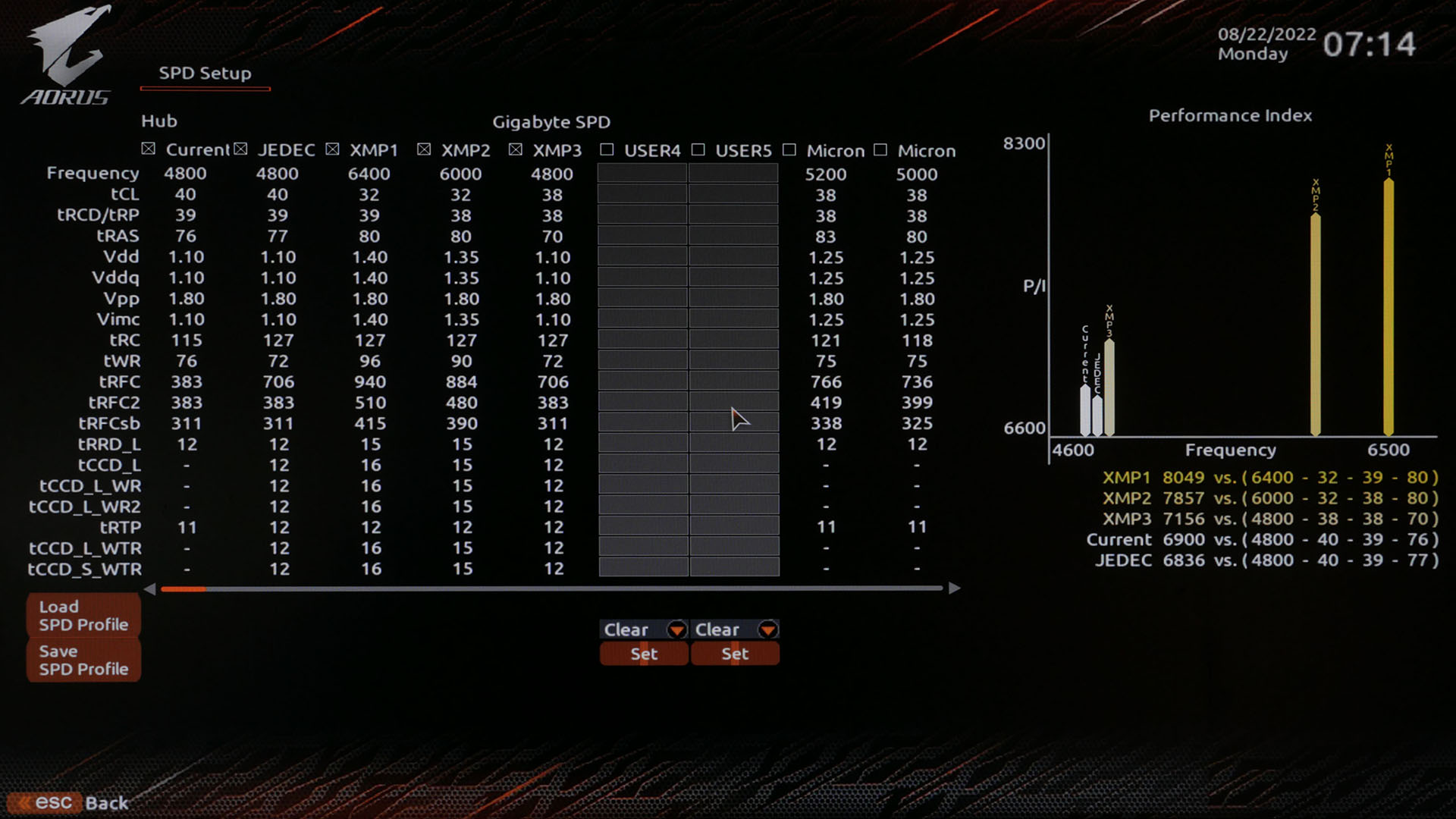
The lower these numbers, the lower the overall latency of the memory. Latency timings have steadily increased with each generation of DDR, but their impact has been totally outweighed by the advances in clock speed. For instance, a CL18 3200MHz DDR4 module will have a latency of 18 x 2,000 / 3,200 = 11.3ns (nanoseconds), whereas a CL32 6400MHz DDR5 module with will have an effective latency of 32 x 2,000 / 6,400 = 10ns.
There’s a final number you might see on some memory listings and in motherboard BIOS settings as well, which is the command rate. Generally, it will be either 1T or 2T and this refers to the number of clock cycles between a DRAM chip being selected and a command being executed. Using 1T is faster but 2T can be more stable.
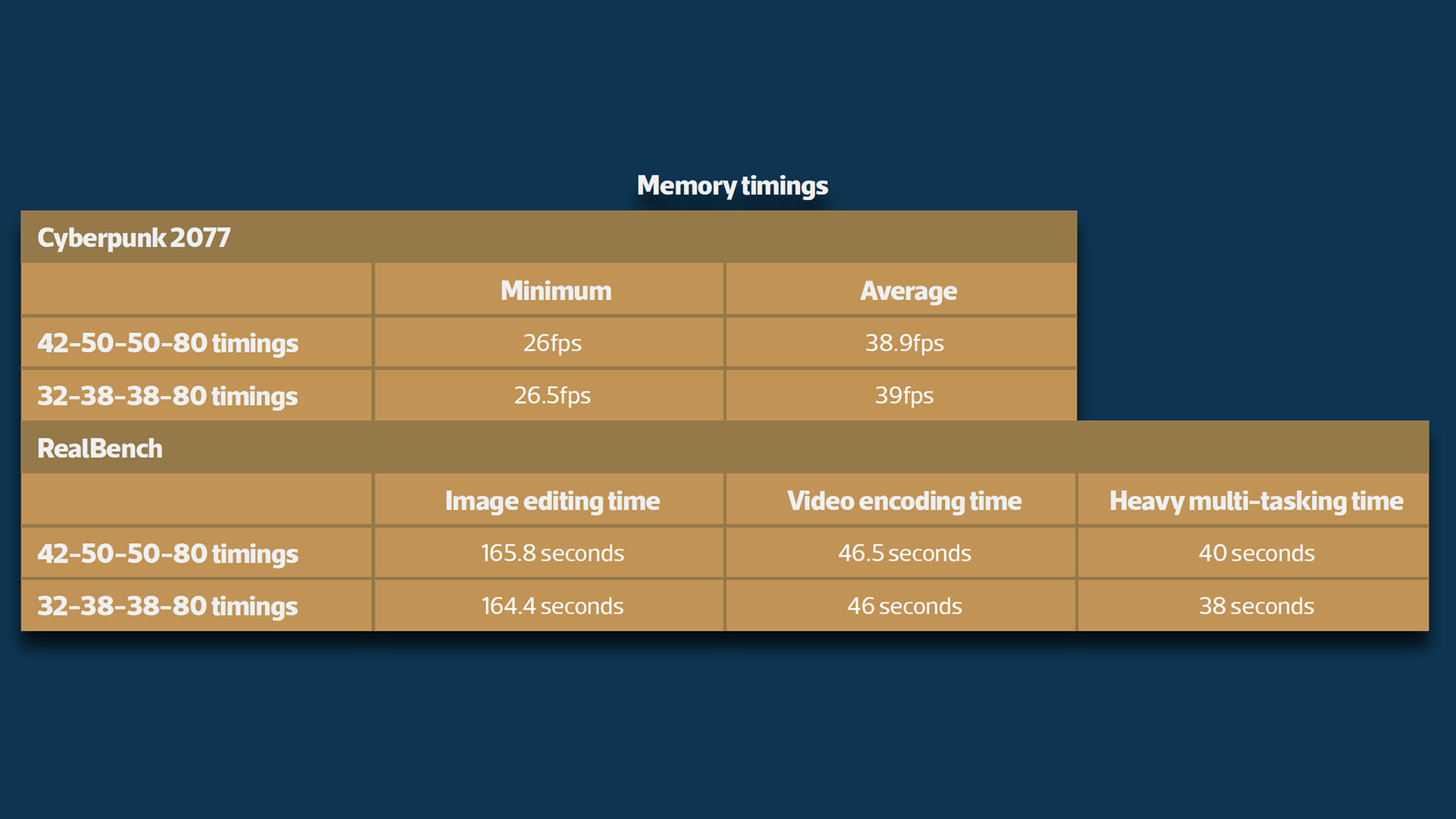
Do RAM latency timings matter for gaming?
In our tests, latency timings have a negligible impact on gaming performance. To put this to the test, we coupled an Intel Core i5-12600K with 32GB of Kingston Fury Renegade 6400MHz memory and a GTX 1060 graphics card, we recorded just a 0.5fps rise in the minimum frame rate and a 0.1fps rise in the average frame rate in our Cyberpunk 2077 benchmark when going from timings of 32-38-38-80 to 42-50-50-80.
Given the large difference in those timings and the microscopic difference in frame rate, it’s clear that latency timings are largely irrelevant for gaming. However, latency timings do impact performance in Windows when multi-tasking, by an average of 5 percent in our tests.
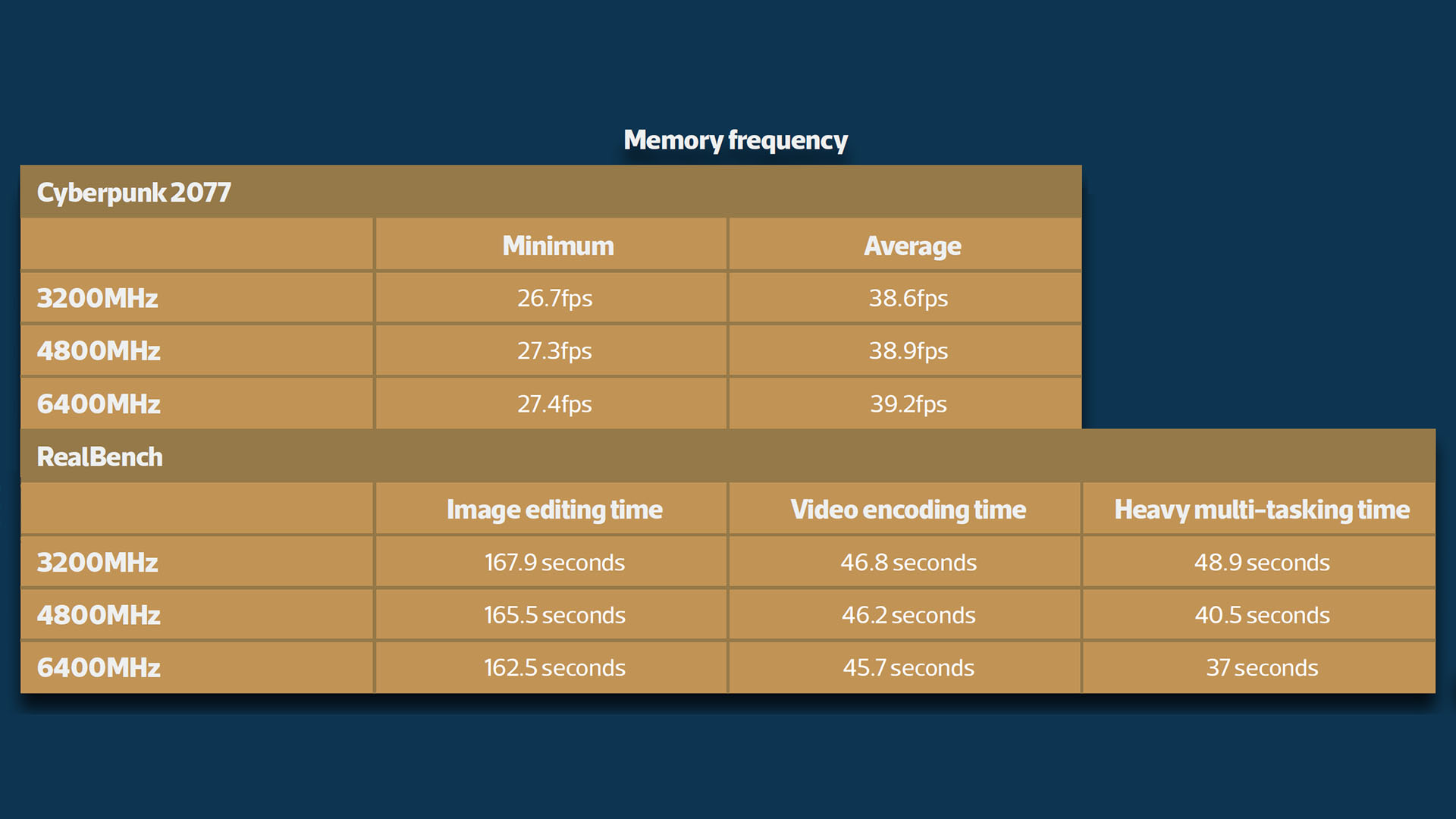
Does RAM clock speed matter for gaming?
While memory timings might have a subtle effect on system performance, the impact of memory clock speed is more noticeable. Using the same test kit as for latency timing, we underclocked our DDR5 RAM kit to 3200MHz (effective) then 4800MHz and compared the results to the performance at the kit’s default 6400MHz speed.
Across the board, we saw notable performance differences, most visible in our heavy multi-tasking workload where the default 6400MHz speed memory knock over ten seconds off the 3200MHz result – a 32 percent difference.
In single-threaded workloads, the difference wasn’t quite so dramatic but even in games we saw our Cyberpunk 2077 average frame rate rise from 38.6fps to 39.2fps while the minimum frame rate rose from 26.7fps to 27.4fps.
Overall, though, both the tiny difference in system performance when varying memory timings, and the more noticeable but still relatively small differences when varying memory clock speed, speak to the particular role of memory in PC performance gaming. When all is said and done, memory doesn’t provide the processing speed that makes a PC run fast – it just ensures the processors aren’t starved of data on which to work.
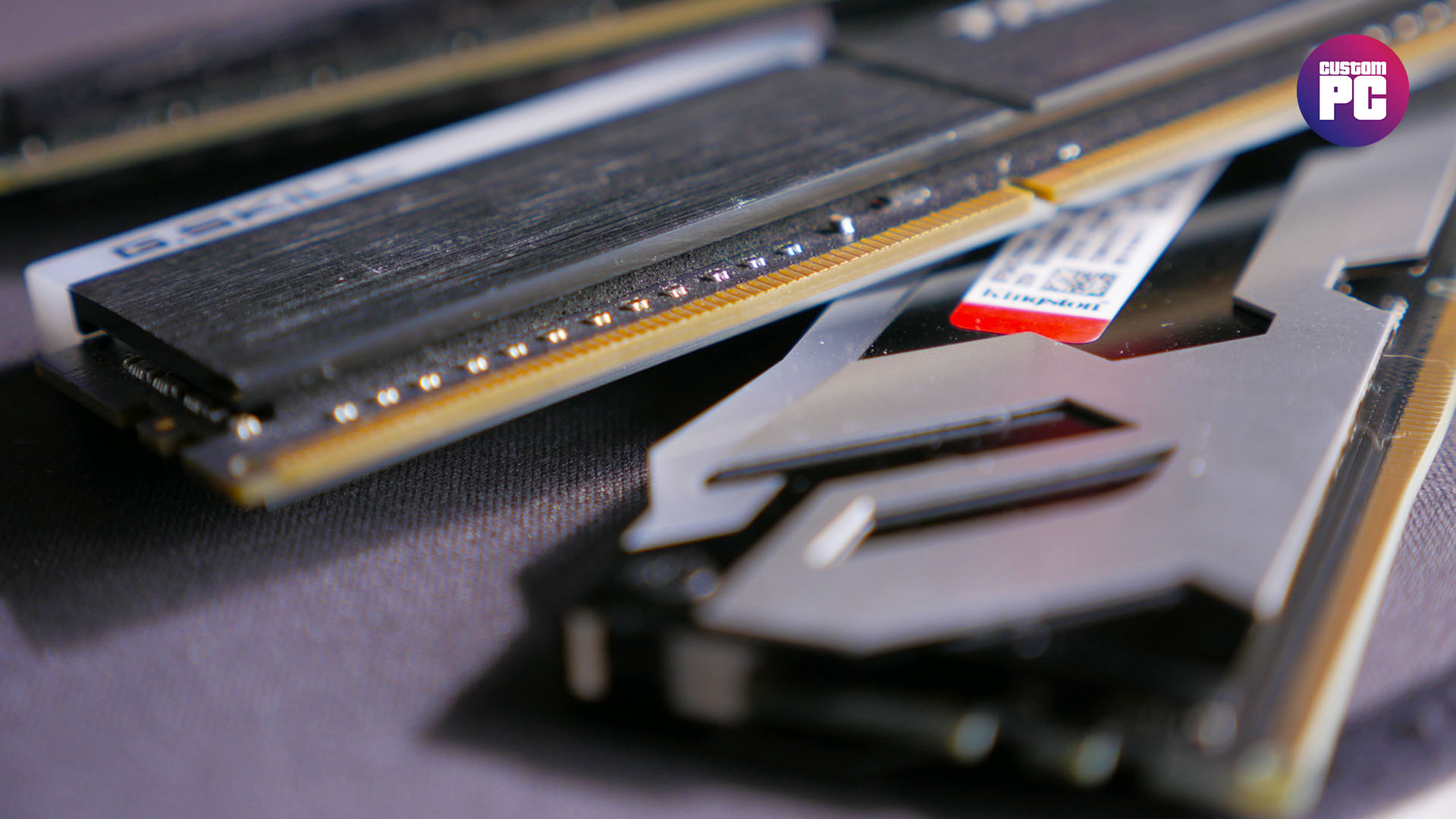
AMD or Intel optimized RAM?
Some DDR4 kits are sold as ‘Intel optimized’ or ‘AMD optimized’, which made sense a few years ago. When the first-generation AMD Ryzen systems were launched, we saw lots of memory refusing to POST at frequencies beyond 2933MHz, even if they were rated much higher.
This problem was soon solved by kits based on Samsung’s B-die memory, which would POST at their full rated frequencies. However, with the latest DDR4 systems we’ve seen little tangible difference between ‘Intel optimized’ and ‘AMD optimized’ memory. We’ve also seen some ‘AMD optimized’ memory fail to hit its top-rated frequency in Socket AM4 motherboards, while it’s fine in Intel systems – you largely don’t need to worry about this with DDR4 memory now.
With DDR5 memory, AMD has introduced its EXPO profile system, which is similar to Intel’s XMP system. Your motherboard should detect its maximum rated frequency, latency timings, and voltage automatically, and let you apply it easily. In our own AMD Expo benchmarks, we’ve also seen EXPO memory perform better on AMD Zen 4 systems than non-EXPO memory. Similarly, for Intel systems, you want memory that supports Intel’s latest XMP 3 memory profile system.
That’s a wrap for our memory guide – you now know exactly which memory you need to buy for your system and budget (you’re welcome!) If you’ve never built a PC before, then check out our guide on how to build a gaming PC, which includes information about installing and setting up memory. We also have full guides to the best CPU and the best graphics card for you to put in your new gaming PC.
